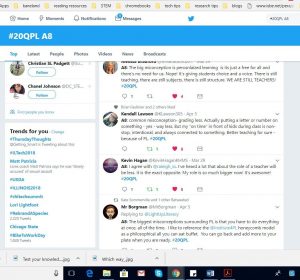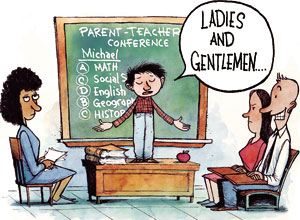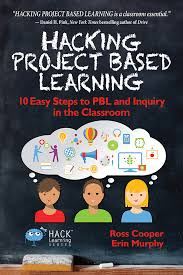Welcome back! We hope you have had a fantastic start to your school year! We are looking forward to working alongside you this year. Please use the Coaching Request Form to initiate working together. You can click on the hyperlink here or find the link in your Faculty Resource Manual (FRM). Please don’t hesitate to contact us with any questions. These resources have also been added to the coach resource tab on this blog so that you can always access them easily.
We have a lot of new staff this year, so we wanted to take some time to introduce ourselves and get more acquainted with you all. This information is also visible on the Your Coaches tab of this blog.
Lauren Vaclavik

Hi all! I am very excited to be jumping into my 14th year in education and my fourth year as an instructional coach! I have had the advantage of teaching and coaching in multiple districts in my educational career. I began my journey in education at St. Joseph’s High School in Westchester, IL for two years as an English teacher and then headed out to Sandwich High School, where I taught for another eight years. At that point, life threw our family a twist. Just as I thought my career path was changing to a stay at home mom, I received a call to come be an instructional coach at Plano High School. I spent two years at Plano figuring out what it meant to be a coach and how to define my role. Last year I joined the Kaneland family as I was looking for my forever home as an instructional coach at the high school. This year has brought about some shifts and I am very excited to learn and grow as a coach at the elementary level. I hope to be able to add a new perspective to the team and help Kaneland develop. I can’t wait begin to work and learn with you!
On a more personal note, I currently live in Yorkville with my husband and three kiddos. Kevin, my husband, and I have been married for 9 years and he works as a detective for Kendall County. My oldest kiddo is five years old and just entered kindergarten in the dual language program. My middle child, by one minute, is my three year old son Caleb. He fits the mold as Mommy’s little guy and spends a majority of his time wrestling his older sister. My youngest, also three, is Harper. She is my old soul that can also be classified as serial cuddler. Our home life can be pretty crazy between the chaos of the kids and my husband’s ever changing schedule. When I do take some time for myself, I am an avid nonfiction reader and try to remain as active as possible. Last year I was able to finish 1st place for women (with over 500 people running) in a 5K to celebrate my birthday and ended the school year running on an Ultra Ragnar team (team of 6 people ran from Chicago to Madison, WI over 20 hours, I ran 32 miles). If you need a teammate I am in!
Dan Rutter

Hello All! I am very excited about starting up another school year in the Kaneland school district. I have been affiliated with the district for over 35 years, as a resident, student, parent, and educator in 302! This is my 10th year as an educator at Kaneland and second year as an Instructional Coach. I previously worked as a 5th grade teacher and STEM teacher with the KPASS structure. Recently I obtained my Masters in Education Admin from Northern Illinois University and have previously received a Masters in Education from Aurora University in 2009. Prior to my work in education, I worked in business industry, throughout the Midwest, as a manager trainer for Foot Locker and then operated a local sporting goods store while beginning a family.
More about me- I have been married to my wife Julie for over 22 years and reside in Sugar Grove. Julie is a mortgage lender in the banking industry. We have twin, 21 year old, daughters that are entering their final year of college. Rachel, the “oldest” as she deems herself is a forensic science/chemistry major at West Virginia University. She spent the summer as an intern investigating various crime scenes. Hopefully she gets her dream job in the forensic field. My daughter Riley attends Western Illinois University and is majoring in Special Education. She is currently doing her block teaching in Macomb this fall and will be student teaching somewhere closer to home in January. My youngest is Cole, a 20 year old sophomore at Waubonsee. He is an avid baseball fan and is currently pursuing a degree in Physical Therapy. Now that you know more about me, I’m looking forward to learning so much more about you. Best of luck to each of you this year!
Nancy Meisenger
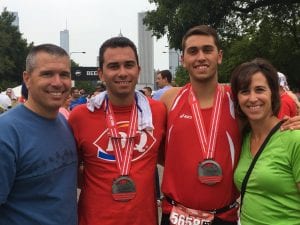
I am so excited to kick off this school year with you! I have been a member of the Kaneland family since 2006. This is my second year as an instructional coach. Prior to this role, I served KSS and KST as a STEM coach for two years. I also worked as the Literacy special teacher at John Shields for 9 years. During my time at Kaneland, I acquired my Teacher Leadership Endorsement at Aurora University. My earlier experiences in education were as a reading interventionist and fourth grade teacher in California. There I earned my Master’s Degree in Math, and Science, and Educational Technology. My initial teaching experience was as a bilingual teacher in District 87, here in Illinois.
On a personal note, my husband Jeff and I recently celebrated my 25th wedding anniversary and have two adult sons who are launching their careers. John is starting his first teaching job in Milwaukee where he is a Physical Education teacher. Michael just finished an internship with the US Forestry Service in Colorado and will be completing his senior year at Carthage with a major in environmental science. While I grew up in Illinois, my family lived in Virginia, Oklahoma, North Carolina, Florida and California during my husband’s 12 years of active duty in the Marine Corps. That experience definitely taught me to roll with the punches and adapt to new situations. I also learned during that time was that there is no place like home. The values and community feel of the midwest is like no other region. For that reason we came back home to the midwest. I believe our district is the perfect place to exemplify and appreciate those values through education and partnership. In our spare time, I am learning all about home renovation. Ask me about cutting drywall or caulking door frames. I am learning things that I never thought I would or could do. I am trying my best to have a growth mindset! I hope your year is filled with learning, adventure, support, and plenty of laughs. I look forward to working with all of you!
Anne Olsen

Greetings to all. Hope everyone had a great restful summer. Summer was a busy time of travel for me. Europe was my destination,specifically the motherland, Ireland, England and Scotland. From navigating on what I call the wrong side of the road, to castles, to friendly people to learning how to pour the perfect pint of Guinness, it was a memorable trip.
As we calibrate into school mode, I wanted to reintroduce myself to everyone. A little bit about my Kaneland life — this will be my second year as an Instructional Coach. Prior to this assignment I was a STEM Coach at KBK and KME for two years. I called KME my home 9 years from 2006 until 2015 in fourth grade. Joliet School District in 6th grade at Washington Junior High was my first teaching assignment. I received my masters degree in Teaching from Aurora University. Additionally, I have a Masters Certificate from Penn State University in Children’s Literature and many classes in technology from NIU.
On the personal side — I have lived in Geneva for the past 24 years. And as most of you know from when I start to talk I do not come from Illinois. I am a true blue New Yorker – – New York Yankee and New York Jet fan. I grew up in the borough of Queens which is part an intricate part of NYC. I am married to my husband John for a long time and we have with three children and one granddaughter. We moved to the midwest from NYC because of a job transfer in the toy industry. My daughter Ali is a graduate of the Savannah College of Art and Design with a degree in painting. And we all know how far that will get you. She has taken on a role of a Project Manager in the healthcare industry. My son Ryan lives in Chicago and is a senior analyst in the healthcare industry.. He received his Masters in Public Administration from DePaul University. My youngest, Colin lives in New York City and works for the Hearst Corporation as their Senior Production Manager for all their digital work.
I look forward to an exciting to school year for our students.

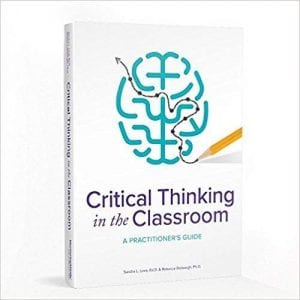







 The Twitter chat #20QPL by Natalie Smith and Nancy Meisenger wrapped up this week. There were so many valuable ideas, quotes, reflections and resources shared throughout this online discussion. We thought it would be beneficial to share for those of you who missed it!
The Twitter chat #20QPL by Natalie Smith and Nancy Meisenger wrapped up this week. There were so many valuable ideas, quotes, reflections and resources shared throughout this online discussion. We thought it would be beneficial to share for those of you who missed it!